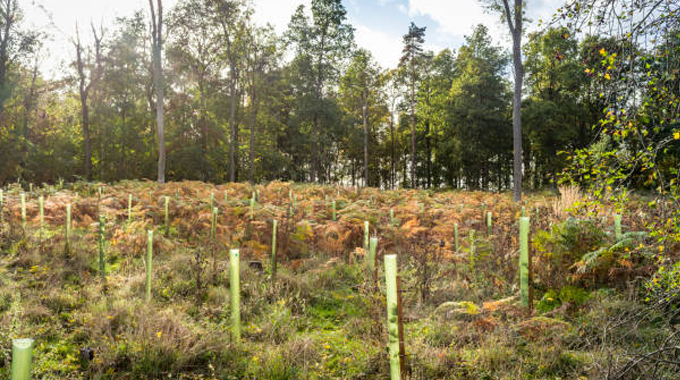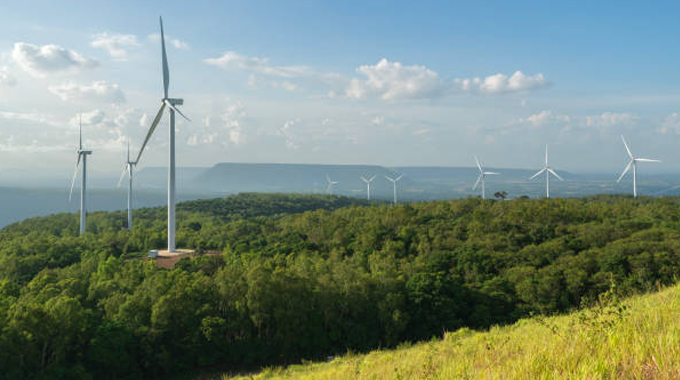Climate Change and Forest Management: Challenges and Solutions
- August 15, 2024
- 0 comment
Experts caution that now is the time to address climate change’s impact on forests. As temperatures rise and ecosystems face new threats, effective forest management is essential. This guide explores the challenges and offers solutions to ensure the sustainability of our woodlands.

This comprehensive overview explores both the obstacles posed by climate change and the proactive measures that can be implemented to ensure the resilience and sustainability of forests. By integrating scientific research, sustainable practices, and community engagement, it offers a roadmap for navigating the complexities of forest management in an era of climate uncertainty.
List of Forest Management Challenges and Solutions:
- Understanding the Impact of Climate Change on Forests
- Challenges in Forest Management Due to Climate Change
- Adaptive Forest Management Strategies
- Mitigation Efforts through Forest Management
- Technological and Scientific Innovations
- Policy and Community Engagement
Understanding the Impact of Climate Change on Forests

Changes in Temperature and Precipitation Patterns
Climate change has led to significant alterations in temperature and precipitation patterns worldwide. Forests, which are highly sensitive to climatic variations, are experiencing shifts in growing seasons, altered water availability, and increased stress. Warmer temperatures can extend the growing season but also increase evapotranspiration, reducing soil moisture and stressing trees. Conversely, changes in precipitation can lead to either drought conditions or excessive rainfall, both of which adversely affect forest health.
Increased Frequency and Intensity of Wildfires
One of the most visible impacts of climate change on forests is the increased frequency and intensity of wildfires. Higher temperatures and prolonged drought periods create ideal conditions for fires to ignite and spread rapidly. These fires not only destroy vast tracts of forest but also release significant amounts of carbon dioxide into the atmosphere, exacerbating the problem of climate change. Additionally, wildfires disrupt ecosystems, kill wildlife, and pose severe risks to human communities.
Shifts in Species Distribution and Forest Composition
Climate change is causing shifts in species distribution and forest composition. As temperatures rise, some tree species are migrating to higher altitudes or latitudes in search of suitable habitats. This shift disrupts existing ecosystems and can lead to the decline of species that cannot adapt quickly enough. Changes in forest composition can also alter the ecological balance, affecting biodiversity and the services that forests provide, such as carbon storage and water regulation.
The Impact on Forest Health and Productivity
Overall, climate change is impacting forest health and productivity. Increased stress from heat, drought, and pests weakens trees, making them more susceptible to diseases. Forest productivity, which refers to the growth and biomass accumulation of trees, is also affected. Some regions may see a temporary boost in productivity due to longer growing seasons, but this is often offset by the negative impacts of extreme weather events and pest outbreaks.
Challenges in Forest Management Due to Climate Change

Difficulty in Predicting Future Climate Conditions
One of the major challenges in forest management is the difficulty in predicting future climate conditions. Climate models provide a range of possible scenarios, but the exact trajectory of climate change is uncertain. This uncertainty complicates long-term planning and decision-making for forest managers who must balance current needs with future risks. Developing flexible and adaptive management strategies is essential to address this challenge.
Increased Vulnerability to Pests and Diseases
Climate change exacerbates the vulnerability of forests to pests and diseases. Warmer temperatures can lead to the proliferation of pest species, while stressed trees are less able to defend themselves against infestations. For example, the mountain pine beetle epidemic in North America has been linked to milder winters and prolonged warm periods, which allowed the beetles to thrive and decimate vast areas of pine forests.
Managing Forest Resilience and Adaptation
Managing forest resilience and adaptation in the face of climate change is a complex task. Forest managers must ensure that forests can withstand and recover from climate-induced stresses. This involves promoting biodiversity, protecting critical habitats, and restoring degraded areas. Adaptive management practices, such as selective logging and controlled burns, can help maintain forest health and resilience.
Balancing Conservation and Commercial Interests
Balancing conservation and commercial interests is another significant challenge. Forests provide valuable resources, such as timber and non-timber products, which are important for local economies. However, sustainable forest management requires that these resources are harvested in a way that does not compromise the long-term health of the forest. This balance is crucial for ensuring that forests continue to provide ecological, economic, and social benefits.
Adaptive Forest Management Strategies

Developing Climate-Resilient Tree Species and Ecosystems
One adaptive strategy is to develop climate-resilient tree species and ecosystems. This can be achieved through selective breeding and genetic modification to produce trees that are more resistant to drought, pests, and diseases. Additionally, promoting mixed-species forests can enhance resilience, as diverse ecosystems are better able to adapt to changing conditions and recover from disturbances.
Implementing Sustainable Harvesting Practices
Sustainable harvesting practices are essential for maintaining forest health. This includes selective logging, which removes only certain trees while preserving the overall structure and function of the forest. Reduced-impact logging techniques minimize damage to the surrounding vegetation and soil, ensuring that the forest can continue to regenerate and thrive.
Enhancing Forest Biodiversity to Improve Resilience
Enhancing forest biodiversity is a key strategy for improving resilience. Biodiverse forests are better equipped to withstand and adapt to environmental changes. This can be achieved by protecting existing biodiversity hotspots, restoring degraded areas, and planting a variety of native species. Biodiversity also provides multiple ecosystem services, such as pollination and pest control, which support forest health.
Utilizing Traditional and Indigenous Knowledge in Management Practices
Traditional and indigenous knowledge offers valuable insights into sustainable forest management. Indigenous communities have long-standing practices that promote forest health and resilience. Incorporating this knowledge into modern management practices can enhance sustainability. For example, traditional fire management techniques can help reduce the risk of large wildfires while maintaining the ecological balance.
Mitigation Efforts through Forest Management

Carbon Sequestration and the Role of Forests as Carbon Sinks
Forests play a critical role in mitigating climate change by sequestering carbon dioxide from the atmosphere. Through the process of photosynthesis, trees absorb carbon dioxide and store it as biomass. Forest management practices that enhance carbon sequestration, such as maintaining healthy forests and promoting reforestation, are essential for reducing greenhouse gas concentrations.
Afforestation and Reforestation Projects
Afforestation and reforestation projects are effective strategies for increasing forest cover and sequestering carbon. Afforestation involves planting trees on lands that were not previously forested, while reforestation focuses on restoring forests that have been degraded or cleared. These projects not only sequester carbon but also provide habitat for wildlife, improve soil health, and enhance water quality.
Promoting Agroforestry and Mixed-Use Landscapes
Agroforestry, which integrates trees and shrubs into agricultural landscapes, offers multiple benefits. It enhances biodiversity, improves soil fertility, and provides additional sources of income for farmers. Promoting agroforestry and mixed-use landscapes can create more resilient and sustainable ecosystems, contributing to both climate mitigation and adaptation.
Policies and Incentives for Sustainable Forest Management
Effective policies and incentives are crucial for promoting sustainable forest management. Governments can implement regulations that protect forests, provide financial incentives for sustainable practices, and support research and innovation. International cooperation and agreements are also essential for addressing the global nature of climate change and ensuring that forest management efforts are coordinated and effective.
Technological and Scientific Innovations

Use of Remote Sensing and GIS for Monitoring Forest Health
Technological advancements, such as remote sensing and Geographic Information Systems (GIS), have revolutionized forest management. These tools enable real-time monitoring of forest health, allowing managers to detect and respond to changes quickly. Remote sensing provides data on forest cover, biomass, and disturbances, while GIS helps in mapping and analyzing spatial patterns.
Advances in Genetic Research for Resilient Tree Species
Genetic research is advancing the development of resilient tree species. By understanding the genetic basis of traits such as drought tolerance and disease resistance, scientists can breed or genetically modify trees to better withstand climate-induced stresses. These advances contribute to the creation of forests that are more resilient to future climatic conditions.
Application of Data Analytics and Modeling in Forest Planning
Data analytics and modeling are powerful tools for forest planning. By analyzing large datasets, forest managers can make informed decisions about management practices and predict the impacts of different scenarios. Modeling helps in understanding complex interactions within forest ecosystems and can guide adaptive management strategies.
Innovations in Forest Fire Management and Prevention
Innovations in forest fire management and prevention are critical for reducing the risk of devastating wildfires. Technologies such as early warning systems, drones for monitoring fire activity, and advanced firefighting techniques are improving the ability to prevent and respond to fires. Integrating these innovations into forest management practices can enhance the resilience of forests to fire.
Policy and Community Engagement
Importance of International Cooperation and Agreements
International cooperation and agreements are vital for addressing the global challenge of climate change. Collaborative efforts, such as the Paris Agreement, aim to reduce greenhouse gas emissions and promote sustainable development. Forest management plays a key role in these efforts, and international cooperation ensures that strategies and resources are shared effectively.
Engaging Local Communities in Forest Management Practices
Engaging local communities in forest management is essential for sustainability. Local communities often have a deep connection to their forests and can contribute valuable knowledge and labor. Participatory management approaches, where communities are involved in decision-making processes, enhance the effectiveness and equity of forest management.
Education and Awareness Programs for Sustainable Forestry
Education and awareness programs are crucial for promoting sustainable forestry. These programs can inform the public about the importance of forests, the impacts of climate change, and the benefits of sustainable practices. Increasing awareness helps build support for conservation efforts and encourages responsible behavior.
Frequently Asked Questions (FAQs)
1. How does climate change impact forests?
Climate change affects forests by altering temperature and precipitation patterns, increasing the frequency and intensity of wildfires, shifting species distributions, and impacting forest health and productivity. These changes lead to stressed ecosystems, increased vulnerability to pests and diseases, and disruptions in forest composition and biodiversity.
2. What are the major challenges in forest management due to climate change?
The major challenges include predicting future climate conditions, increased vulnerability to pests and diseases, managing forest resilience and adaptation, and balancing conservation with commercial interests. Forest managers must develop flexible strategies to address these uncertainties and maintain forest health.
3. How can forest management adapt to climate change?
Adaptive strategies include developing climate-resilient tree species and ecosystems, implementing sustainable harvesting practices, enhancing forest biodiversity, and utilizing traditional and indigenous knowledge. These approaches help forests withstand and recover from climate-induced stresses.
4. What role do forests play in mitigating climate change?
Forests act as carbon sinks, sequestering carbon dioxide from the atmosphere through photosynthesis. Practices like afforestation, reforestation, and promoting agroforestry enhance carbon sequestration. Sustainable forest management helps maintain these carbon sinks and reduces greenhouse gas concentrations.
5. What technological innovations are aiding forest management in the context of climate change?
Technological innovations include remote sensing and Geographic Information Systems (GIS) for monitoring forest health, advances in genetic research for developing resilient tree species, data analytics and modeling for forest planning, and new forest fire management and prevention techniques. These technologies improve decision-making and forest resilience.
6. How can policies and community engagement support sustainable forest management?
Effective policies and incentives, international cooperation, and engaging local communities in forest management practices are crucial. Education and awareness programs promote sustainable practices, while participatory management approaches involve communities in decision-making processes, enhancing the effectiveness and equity of forest management.
7. What are some examples of successful climate-adaptive forest management?
Successful case studies often involve innovative strategies and collaborative efforts. Examples include projects that integrate traditional knowledge, use advanced technologies for monitoring and management, and engage local communities in conservation efforts. These examples demonstrate effective approaches to addressing climate change impacts on forests.
8. Why is it important to balance conservation and commercial interests in forest management?
Balancing conservation and commercial interests ensures that forests can provide ecological, economic, and social benefits sustainably. Sustainable harvesting practices protect forest health while supporting local economies. This balance is essential for maintaining long-term forest resilience and productivity.
9. How do shifts in species distribution and forest composition affect ecosystems?
Shifts in species distribution and forest composition disrupt existing ecosystems, leading to the decline of species that cannot adapt quickly. These changes affect biodiversity and ecosystem services, such as carbon storage and water regulation, altering the ecological balance and potentially reducing forest resilience.
10. What are the benefits of enhancing forest biodiversity?
Enhancing forest biodiversity improves ecosystem resilience, as diverse forests are better equipped to adapt to environmental changes and recover from disturbances. Biodiversity also provides multiple ecosystem services, such as pollination and pest control, supporting overall forest health and productivity.

Gilbert Griffin
Forestry AuthorGilbert Griffin is a forest management expert specializing in sustainable practices, forest health, conservation, and land management. With extensive knowledge in pest control, disease management, and habitat restoration, Gilbert develops strategies to preserve forest ecosystems and biodiversity. Passionate about the natural world, Gilbert adapts to changes in forest management and stays updated through continuous learning. Gilbert also provides seasonal advice to optimize forest care throughout the year.






Leave your comment